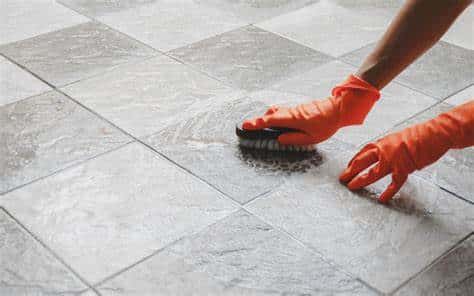5 Tips To Remove Stain From Stone Tile In San Diego

Stone tiles can add a touch of elegance and sophistication to any space, be it your kitchen, bathroom, or outdoor patio. However, despite their timeless beauty, stone tiles are not immune to stains. Whether it’s red wine spills, oil splatters, or coffee rings, stains on stone tiles can be a headache to deal with. But fear not! In this article, we’ll share five effective tips to help you remove stains from stone tiles and restore their natural beauty.
-
Act Quickly
The first rule of thumb when it comes to removing stains from stone tiles is to act swiftly. The longer a stain sits on the stone surface, the more difficult it becomes to remove. As soon as you notice a spill or stain, grab a clean cloth or paper towel and blot the affected area gently. Avoid rubbing, as this can push the stain deeper into the stone.
-
Identify the Stain
Different types of stains require different treatment methods. It’s essential to identify the stain type before attempting any removal process. Common types of stone tile stains include: Organic stains (e.g., coffee, wine, or food) can often be lifted with a mixture of water and mild dish soap. Avoid using acidic or abrasive cleaners, as they can damage the stone. Oil-based stains (e.g., grease, cooking oil) can be tackled with a poultice made from a mixture of baking soda and water. Apply the poultice to the stain, cover it with plastic wrap, and leave it overnight. This should draw out the oil from the stone. Rust stains can be treated with commercial rust removers, but be cautious as these products can be harsh on stone. Alternatively, you can try a mixture of lemon juice and salt for a milder solution. Mildew or mold stains can be removed with a mixture of water and vinegar. Scrub the affected area gently with a soft brush or sponge to avoid scratching the stone.
-
Use a pH-Neutral Cleaner
When cleaning stone tiles, it’s crucial to use a pH-neutral cleaner specifically designed for stone surfaces. Avoid using harsh chemicals or acidic cleaners, as they can damage the stone and cause etching. A pH-neutral cleaner will help you remove stains without compromising the integrity of the stone.
-
Scrub Gently
When scrubbing a stained area, always use a soft-bristle brush or a non-abrasive sponge. Avoid using steel wool or abrasive cleaning pads, as they can scratch the stone’s surface. Gently scrub the stain in a circular motion until it lifts. Rinse the area thoroughly with clean water after cleaning.
-
Seal Your Stone Tiles
One of the best ways to prevent future stains on your stone tiles is to apply a high-quality stone sealer. Sealers create a protective barrier on the stone’s surface, making it less porous and more resistant to stains. Be sure to follow the manufacturer’s instructions for applying and reapplying the sealer as needed, usually every 1-2 years.
FAQs
Can I Use Bleach To Remove Stains From Stone Tiles?
It’s not recommended to use bleach on stone tiles, as it can damage the stone’s surface and cause discoloration. Stick to pH-neutral stone cleaners for safe and effective stain removal.
Are All Types Of Stone Tiles Equally Susceptible To Stains?
No, the susceptibility to stains varies among different types of stone. Porous stones like marble and limestone are more prone to staining than denser stones like granite. Proper sealing can help protect all types of stone tiles.
Can I Prevent Stains By Using Coasters And Mats On Stone Surfaces?
Yes, using coasters for drinks and mats in high-traffic areas can help prevent stains on stone tiles. These preventive measures reduce the chances of spills and stains reaching the stone surface.
Conclusion
Dial (858) 952-0777 to reach San Diego Tile Grout Cleaning for stone repair services.
Contact San Diego Tile Grout Cleaning Today at (858) 952-0777 to clean your grout! Our technicians are fully trained and will ensure that all your tiles are carefully cleaned. Furthermore, our cleaning service is affordable. Contact us today for a quote or any questions you may have.


